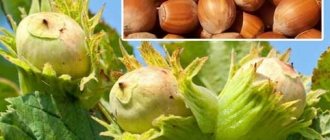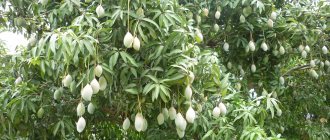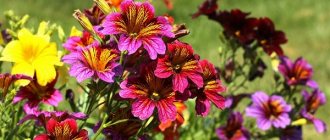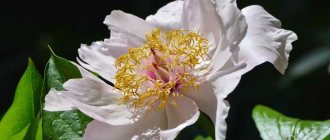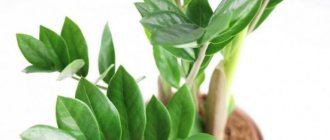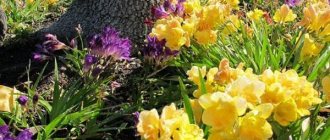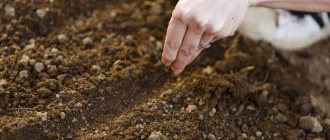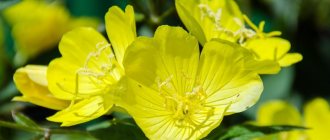Chokeberry, better known as chokeberry, is a fairly large shrub that was originally found only in North America. Now rowan is grown all over the world, and its popularity is due to the healing properties of the fruit.
Planting and caring for chokeberry does not present any difficulties, since this shrub is unpretentious, does not require special attention from the gardener and grows successfully on almost any soil. Features of chokeberry agricultural technology will be discussed in this article.
Aronia chokeberry bush: planting and care
Chokeberry, or chokeberry as it is more often called, initially did not look quite the same as it does now. It was a small tree with black tart berries. But in the 19th century, the scientist Michurin noticed that the culture is surprisingly unpretentious, and crossed it with ordinary mountain ash. As a result, the shrub that we are used to seeing in gardens appeared (Figure 1).
Note: Chokeberry is naturally found in the sandy plains and wetlands of North America, but can grow in other soils as well. Despite the unpretentiousness of the plant, the yield and diameter of the crown of the bush will depend on the soil.
If we talk about the botanical description of chokeberry, first of all it is worth highlighting its frost resistance. The culture winters quietly without shelter, not only in temperate, but also in northern climates. Among other characteristics, it is worth highlighting disease resistance, high yield and the ability to grow and bear fruit in any climate.
Figure 1. Aronia chokeberry is a valuable ornamental and fruit crop.
Chokeberry is often used to strengthen the soil. Its root system occupies a large area, so the bush will not allow the soil to crumble along the edge of a ravine or on sloping areas. But the main value is still represented by the fruits of chokeberry. These are small berries with a tart taste, which contain a huge amount of vitamins, valuable minerals and nutrients.
Description of chokeberry
Aronia melanocarpa (Michx.) Elliott is a perennial shrub 2-2.5 meters tall, with a dense spherical crown .
The root system is developed, fibrous, deeper (40-60 centimeters in the horizon) than that of currants. Every year, new zero shoots grow from the rhizome, which leads to a gradual saturation of the crown with branches of different ages. The bush also grows due to suckers (like raspberries).
The number of stems of different ages and origins can reach up to 80 pieces
The leaves are simple, entire, obovate or elliptical, pointed, dense, dark green, up to 7 cm long. Before frost, the leaves fall off completely.
The fruit bud of chokeberry is mixed. This means that both an inflorescence develops from it (in chokeberry it is always apical) and a vegetative shoot.
The flowers of Chokeberry are small, white or pink, in multi-flowered corymbs, bisexual, self-pollinating. They open quite late when avoiding frost. At this time, new branching shoots reach 10-15 centimeters and are well leafy. One flower lives up to eight days, the entire flowering period is 10-15, the fruit is formed in 80-90 days. At the base of the growths of previous years and near the apical buds there are small dormant buds, which is taken into account when rejuvenating pruning of branches. The growth of vegetative shoots occurs quickly and ends in August.
The fruits are large berries up to 0.8 mm in diameter, spherical, apple-shaped, black with a bluish coating, edible.
It blooms annually in mid-May - early June, the fruits ripen at the end of August (good).
Chokeberry Distribution
The homeland of Chokeberry is North America. It was brought to Europe as an ornamental plant. At the beginning of the century, several specimens of chokeberry came to Russia, where it became an object for botanical observations.
Beneficial properties of fruits
Chokeberry can be safely called a storehouse of useful substances, because the composition of the berries is rich in valuable vitamins and microelements. Due to the fact that the combination of biological substances in the fruits is balanced, products based on the fruits of such rowan have a pronounced pharmacological effect (Figure 2).
The healing properties of chokeberry are expressed in the following actions:
- Fresh fruits and their juice dilate blood vessels, relieve spasms, strengthen capillaries and stop bleeding. That is why they are often used for the treatment and prevention of hypertension and atherosclerosis.
- Chokeberry berries will help strengthen the immune system, lower cholesterol levels and normalize blood pressure.
- The medicinal properties of chokeberry are also reflected in the endocrine system, so they are recommended for consumption by people with pathologies of this organ. Chokeberry is considered especially useful for patients with diabetes.

. In general, chokeberry berries will be useful for everyone, as they are able to remove toxins and heavy metals from the body, as well as normalize intestinal function. In addition, the standard and bush form of the crop can be easily grown on a summer cottage by creating a hedge.
Chemical composition Organic acids and vitamins in chokeberry
Chokeberry (Chokeberry chokeberry) has recently become widespread. It has earned recognition from gardeners for its early fruiting, high and constant yield, valuable technological properties, medicinal and nutritional qualities due to the presence in it of a large amount of dry matter, sugars, acids (folic and nicotinic) and mineral salts. Aronia berries contain a lot of ash substances, especially calcium. The mineral salts of its fruits also include trace elements - molybdenum, manganese, iron, copper, cobalt, boron, fluorine. But the main value of chokeberry berries is their vitamin content. To date, vitamins such as P, C, PP, E (tocopherol), carotene, B2 and B9 have been found in rowan fruits. The amount of vitamin P (up to 2.3-3.5% by wet weight) significantly exceeds all known cultivated fruit and berry plants. This is mainly due to the medicinal properties of its berries.
[fl:10]
Aronia fruits have an unusually high iodine content. In this indicator, they are even close to feijoa fruits, which are known as natural concentrates of this element. The fruits also contain up to 3.5 percent sorbitol, a sugar substitute for diabetics.
The disadvantage of chokeberry is the low content of vitamin C. In any case, the fruits of this crop contain noticeably less of it than, for example, currants, raspberries and gooseberries.
Planting and care
Experts recommend planting chokeberry in the fall, but in practice the procedure can be carried out in the spring. The main thing is to meet the deadlines. In the fall, the procedure is carried out at the end of September or beginning of October, and in the spring, it is advisable to complete all manipulations before the end of April (Figure 4).
To make it easier to care for rowan in the open ground, you need to choose the right area for its placement. Fortunately, this crop grows successfully on any soil, including acidic and sandy. The only exception is saline soils. Rowan berries develop poorly on them and practically do not bear fruit. The chokeberry area should be well lit. Only in this case will the bush bloom and bear fruit profusely.
Note: The choice of planting material also plays an equally important role. For planting, it is better to use not seeds, but already grown seedlings. they take root much better in a new place, quickly gain the required height and enter the fruiting period earlier.
Before planting a seedling, carefully inspect it. The bark should not show signs of any mechanical damage. The same condition applies to roots. If you notice damaged or dry roots, it is advisable to trim them immediately.
Direct planting of chokeberry looks like this:
- It is better to carry out the procedure in the evening or on a cloudy day, so that increased solar activity does not harm the seedling.
- If you are planting chokeberry as a separate plant, make sure that the distance between it and other garden crops is at least three meters. This will make it easier to care for the plant and make the harvest more abundant, since the bush will be evenly illuminated by the sun.
- The width and depth of the planting hole should be 50-60 cm. In this case, focus on the size of the root system of a particular seedling.
- It is also necessary to prepare the soil mixture with which the hole will be filled. Infertile soil should be set aside, and the interior of the pit should be filled with a special nutrient mixture. It includes 0.3 kg of wood ash, 1 bucket of humus and 150 grams of superphosphate.
- A third of the hole is filled with this mixture, and the remaining space is filled with fertile soil. The soil must be watered with a bucket of water.
- Only after the liquid is absorbed is the prepared seedling placed in the center of the hole. It is necessary to ensure that the root collar is 15-20 cm above the ground level. Otherwise, the bush simply will not take root.
- Next, you should carefully straighten the roots and fill the free space between them with nutritious soil.

The tree trunk circle near the planted rowan is compacted, watered abundantly (10 liters of water per plant) and covered with a layer of mulch. It will protect the soil from moisture evaporation and prevent the growth of weeds.
This planting algorithm can be practiced both in spring and autumn. However, the advantage of autumn planting is that during the winter the soil around the bush becomes very compact, and in the spring it begins to grow more actively.
Growing chokeberry
Aronia chokeberry is highly winter-hardy (withstands frosts of -30...-35°C) and drought-resistant (excellent), not damaged by diseases and pests (excellent). Photophilous, salt-resistant, dust- and gas-resistant.
Choosing a landing site
Chokeberry grows better in wetter places with good natural protection, since its bushes, due to the shallow location of their roots, are quite demanding of moisture. For the same reason, closed low places with constant waterlogging of the upper layers of the soil and the possible danger of freezing of plants, damage to flowers and ovaries are also unsuitable for it; in addition, rowan is a light-loving plant and should not be planted as a seal between fruit trees. Chokeberry is generally unpretentious to soils and, subject to stable moderate moisture, grows well on soils of various mechanical compositions. But still, swampy and saline soils are unsuitable for this crop, and rocky and gristly soils are undesirable. The presence of waterproof gley layers in the subsoil due to periodic waterlogging can cause poor development of rowan plants.
Recommended for creative gardens of all regions and limited for consumer and commodity gardens of the first, second, third, seventh and eastern zones of the fourth regions.
Chokeberry Preparing the soil for planting
Chokeberry to soils and grows on various types of soil.
Planting Chokeberry
Like most berry bushes, Chokeberry can be planted in both autumn and spring. It is only important to carry out all planting work in a timely and thorough manner.
Chokeberry is planted in a permanent place in three-year-old plants. In an effort to simplify pruning, fertilizing, and weed control, a gardener can significantly reduce the lifespan of a chokeberry planting, bringing it to 10-12 years. But in order to compensate for the shortfall in yield due to such a reduction, it is necessary to obtain more of it and as early as possible. This is achieved by a tighter fit. In any type of garden, it is enough to have 2-3 chokeberry bushes. Initially, you need to plant 5 bushes in a row at a distance of 1 meter from each other. When the crowns of neighboring bushes close together, the second and fourth bushes are removed. Two meter spaces will be sufficient to provide good lighting for the remaining three bushes.
The seedling is placed vertically in a hole or furrow and planted at the same depth as it was in the nursery. However, the depth is adjusted, keeping in mind the following: when planting deeply, most of the base of the branches ends up in the soil and therefore there will be more basal shoots. In the first years this is good, as the bush will form faster. But then you will have to spend more effort on removing zero shoots. Enhanced bush growth is also achieved by shortening the aboveground part of the seedlings by 5-6 buds. The planted plants are watered, the soil is compacted, mulched, and loosened.
In collective and home gardens, schemes of 3.0 x 2.5 m or 3 x 3 m may be acceptable for chokeberry. With careful care, rowan can be planted in rows along the internal paths of the plot or hedge at a distance of 1.5-2 m between bushes. The technique for planting rowan is no different from planting other berry bushes. At the same time, you should not bury the root collar of seedlings deeper than it was in the nursery. Otherwise, the plants will produce a large amount of root shoots, which will lead to unnecessary manual labor. In addition, it is important to pay attention to the quality of planting material. Planting well-developed seedlings of the first sort (that is, with a root collar diameter of up to 11-13 mm with 4-5 stems 40-50 cm high and a main root length of at least 25-30 cm) makes it possible to obtain good harvests already in 3-4 years. th year after landing.
In a creative garden, it is advisable to test the strip (as on raspberries) method of growing chokeberry. The width of the tape is 70-80 centimeters, the number of shoots per 1 meter of row is only 15-25 pieces (2-3 of different ages).
Watering and fertilizers
Due to the fact that chokeberry is considered an unpretentious plant, it is very easy to care for. In this case, the growth rate and yield volumes will directly depend on the gardener’s attention to the shrub.
First, let's look at watering. In general, chokeberry develops quite successfully and bears fruit without additional moisture. However, to ensure a bountiful harvest, you will still have to water it several times a season. The shrub needs moisture especially strongly at the very beginning of the growing season. If the weather is hot and dry, at least two buckets of water should be added to each bush. The top layer of soil should be constantly moist. However, stagnation of liquid at the roots should also not be allowed, as this can cause the development of rot and fungal diseases (Figure 5).
Similar watering is necessary during fruit formation. In this case, it is important to pour water not at the root, but into pre-dug grooves along the perimeter of the trunk circle at a distance of 30-40 cm from the trunk.
Note: After each watering, when the moisture is completely absorbed, it is advisable to remove weeds and loosen the top layer of soil.
For abundant fruiting, chokeberries need not only light and timely watering, but also fertilizing. Adding nutrients will have a beneficial effect on flowering and fruiting. In this case, much depends on the quality of the soil on the site. If it is fertile, fertilizers are applied only in the spring, at the beginning of the growing season. Only 50 grams of ammonium nitrate are added to the soil around the tree trunk, and then the soil is mulched with organic matter (high-quality humus or compost).

Figure 5. The plant needs additional watering only at the stage of flowering and fruit ripening
If the soil on the site is poor, in addition to spring feeding, summer feeding is also carried out. It is carried out in the first week of summer. An infusion of chicken manure is used as a nutrient (1 part manure to 10 parts water). A mullein solution (1 part cow manure to 5 parts water) is also suitable. In the fall, after harvesting, 500 grams of wood ash and 100 grams of superphosphate are added to each bush. This will help the plant survive the winter better.
Aronia chokeberry: the best varieties

There are quite a few varieties of Aronia. Experienced gardeners and summer residents consider the following to be the best:
- "Viking".
High level of frost resistance. High level of productivity. The shrub has a height of up to two meters, is straight, the fruits are large in size, spherical in shape, have a pleasant, sweet taste. Able to remain on branches for a long time. Harvesting can be done until mid-autumn.
- “Nero.”
High level of frost resistance. The variety is early ripening, the fruits are large in size (diameter about one cm), have a pleasant taste and light aroma. The shrub has a height of up to three meters.
- “Black-eyed.”
High level of frost resistance. Large spherical fruits (diameter about one cm) have a pleasant smell. The plant does not require special care and is an excellent honey plant.
Shaping and trimming
The success of growing chokeberry and the volume of harvest directly depend on the pruning of the bush. If you do not do this, the crown will become too thick, and fruits will form only on the periphery. To avoid thickening of the crown, you need to adjust the height of the bush and remove excess side shoots in a timely manner.
Typically pruning is carried out in spring and autumn. The spring procedure has the following nuances:
- Immediately after planting, the seedling is pruned so that its height is more than 20 cm. Within a year, the young plant will develop shoots, which will serve as the basis for the crown. You need to leave only the strongest and healthiest branches, equalizing them in height.
- Next year, the strongest shoots are again selected from the formed young shoots and adjusted in height. All weak branches are removed.
- This procedure should be repeated from year to year until the base of the crown of the bush consists of 10 strong branches. At this point, the formation of the chokeberry crown can be considered complete.
In the future, all that remains is to periodically thin out the crown, removing excess shoots. This is necessary for sunlight to penetrate deep into the bush. It should also be remembered that chokeberry branches bear fruit until the age of eight. After this, they must be cut out, leaving a strong young shoot for replacement (Figure 6).

Figure 6. Formative pruning will help you get a rich harvest.
In the fall, after harvesting, only sanitary pruning of the bush is carried out, and only if there is an urgent need for this (for example, the plant has shoots with signs of disease or mechanical damage). In all other cases, autumn pruning should be avoided, as this will negatively affect the condition of the plant in winter.
Distribution and ecology
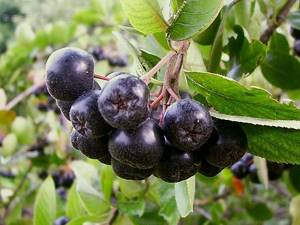
The homeland of Aronia chokeberry is the eastern part of North America. I.V. Michurin first drew attention to this plant and recommended it for northern fruit growing. One of the varieties of chokeberry (Aronia Michurina) was named in his honor. Later, chokeberry was transferred to the Altai fruit and berry station in Gorno-Altaisk. Here scientists have done a lot of work both to promote this new crop for horticulture and to widely introduce it into the country’s industrial production.
Shrub propagation
Aronia chokeberry reproduces very easily. To do this, you can use the seed method, although most gardeners prefer cuttings, dividing the bush or rooting root cuttings and suckers (Figure 7).
Chokeberry is propagated by cuttings as follows:
- Lignified cuttings are harvested from mature shoots 2-4 years old. Planting material is harvested in mid-September.
- The length of the cuttings should be 15-20 cm, and on each such branch there should be 5-6 developed buds.
- The lower cut of the cutting should be straight and located directly under the eye. The top one is made oblique and on the kidney.
- The prepared cuttings are planted in a fertile substrate at a distance of 10-12 cm from each other. Planting material should be placed at an angle of 45 degrees. After planting, only a few buds should remain above the soil surface. The bottom soil should be located at ground level, since it is from this that the roots of the plant will form.
The cuttings should be watered regularly, and after a year (next autumn) they can be transplanted to a permanent place.
Propagation of chokeberry by root suckers is considered no less effective. Every year, abundant basal shoots grow near the mature shrub. If it is not removed in time, within a year such plants will form a full-fledged root system and begin to consume moisture and nutrients intended for the mother bush. To avoid a decrease in yield, the root shoots are carefully separated with a shovel and transplanted to a new location. Before transplanting, the shoot needs to be shortened to 2-3 buds so that it begins to actively form a crown. A similar method is used for rooting cuttings. In this case, they take a well-developed lower shoot, place it in a shallow groove, pin it and sprinkle it with soil. After about a year, the plant will form a root system and can be transplanted to a permanent location.

Figure 7. Main methods of propagation of shrubs
During transplantation, you can also use bush division. To do this, the root of an adult plant is divided into several parts. Each of them should have well-developed roots and buds. Each division is planted in a new place and cared for in the same way as a young seedling.
Aronia varieties and seedling selection
There are quite a lot of chokeberry varieties. The most popular of them are:
Varieties differ in taste and when fruit appears. Therefore, it is recommended to choose a seedling in special nurseries or take a shrub from a nearby area as a basis.
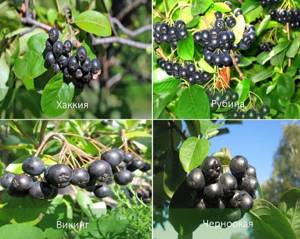
You need to choose an annual or biennial plant. The height of the seedling is up to 1.3 meters, the bark is without damage, and the roots are at least 25 cm in length. Chokeberries can bear fruit for 30 years.
Pest and disease control measures
Diseases and pests rarely affect chokeberry, but with improper care or untimely pruning, certain problems can still arise.
The most common diseases that affect shrubs are:
- Peripheral wood rot: begins to develop when the crop is damaged by honey mushroom spores. To combat the disease, the bush is sprayed with Bordeaux mixture or any other fungicide.
- Fruit rot (moniliosis): fruits become pale and soft, and eventually mummify. Also, characteristic brown spots form on the surface of the berries, inside of which there are fungal spores. All infected berries should be removed immediately, and the bush itself should be sprayed with a copper preparation or fungicide.
- Septoria spot: usually develops in mid-summer. A characteristic sign is the formation of pale brown spots on the surface of the leaf blade. To eliminate the pathology, the bush itself and the soil around it should be sprayed with copper oxychloride or Abiga-pik.
Among the pests, chokeberry is affected by various types of mites and caterpillars. They pose a particular danger during flowering and fruiting, as they greatly weaken the crop and reduce harvest volumes. If colonies of insects are found on a bush, it is necessary to treat it with insecticides.
Planting and caring for this crop is discussed in more detail in the video.
How to propagate chokeberry
Reproduction is carried out in various ways. However, the most popular are generative and using cuttings.
Only a healthy plant is suitable for cuttings. Its length is usually 10-15 cm. The leaves that are located below are completely removed.
The cutting's bark is cut longitudinally under each bud, after which it is dipped into a substance that stimulates root growth for 6 hours. Afterwards it is washed and planted, keeping a distance of 30 cm. Another mandatory condition is compaction of the soil. The temperature in the greenhouse is no more than +20 degrees. If you follow all the recommendations, roots will appear in a month.
Growing chokeberry
The biggest catch is that chokeberry is a very branchy shrub. This means that you should take the trouble to ensure that pruning is done on time and in the right amount. But, let's start with how chokeberry should be planted . This should be done either in spring or autumn.
In the second case, the process must be completed in mid-October. Next comes the choice of location. We have already written that loams are a priority. Plus, study where groundwater flows. There should be no less than a couple of meters to them, or better yet, even further. It is important not to grab the first copy you come across.
In order for a good fruitful chokeberry to grow, the seedlings must be healthy. Choose those that have already reached thirty centimeters in height. They should already have a couple of branches. Study the appearance of the roots, this is especially important.
There are even the slightest signs of illness - do not hesitate, refuse such a product. The bark is also worth examining. A greenish color is a sign that the plant is alive. If the trunk skin is dark, closer to brown, the tree will have problems. Before placing a young bush in a new place, keep it in water. It should stand like this for at least a couple of days.
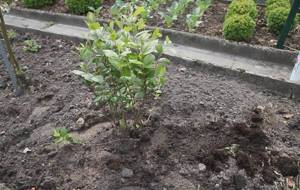
Landing
It is best to begin planting work in the late afternoon. Or choose a cloudy day for this. Remember that chokeberry care will need to be done regularly. Therefore, you need to locate the bush where there is enough space to approach it. It is better to have free space at a distance of three meters.
Some varieties cannot live without long daily sunbathing, while others are suitable for partial shade. Considering the characteristics of these bushes to be densely overgrown with branches, you can build a green hedge from them near the fence. The holes should be made standard for many seedlings.
Those. half a meter deep, the same width and length. But there is no need to plant rows like a carpenter. Remember that the older the plant, the more spreading it becomes. Therefore, the distance between the bushes should be left at two hundred centimeters. If the soil in the garden is not rich, then it is better to add at least a bucket of humus to each hole.
Superphosphate can also be useful, it all depends on the initial soil conditions in the garden. The root collar should not stick out from above. Experienced gardeners give this advice. Bury the bush so that it is hidden at least a centimeter into the soil. Have you been imprisoned? Time to water.
And don’t skimp on water at first. At least ten liters per approach. An important point is mulching. Will save you from many problems. For these purposes, straw or peat will do. Make the layer quite thick, preferably more than five centimeters. Before flowering begins, it would be a good idea to use nitrogen fertilizing.
When this stage is completed, use mineral supplements. And periodic watering with plain water is a must. Take two or three buckets of liquid as a basis. Of course, you can do without loosening the soil, but if you are not lazy, perhaps the tree will reward you with a large harvest.
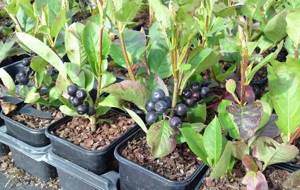
Trimming
Pruning is one of the key points when caring for perennials. This is because the plant is very active in this regard. Over time, it becomes so overgrown that the rays of the sun simply do not break through the dense thicket of leaves. Accordingly, all the berries are formed only at the edge of the crown. This process should not be left to chance. Haircut is important.
And it should be done when the bushes are at rest. Those. very early in spring, or very late in autumn. Of course, first of all, take the weakened branches into circulation. This process is called sanitization. In the autumn months, the crown is being formed, as well as a rejuvenating haircut.
If the branches are in their ninth year, don’t expect a harvest from them. These should be cut down to the roots. Make sure that one bush includes several shoots of different ages. If you come across chokeberry in the photo , then you can see that one properly cared for perennial consists of about twenty stems.
Almost all methods of plant propagation known to botanists are suitable for the heroine of our article. If you take seeds, first let them “wake up” by leaving them in damp sand in a cool room (no warmer than five degrees).
If you risk sowing in the fall, you may fail. Therefore, take care of sowing in the spring. Before sending seedlings from their temporary shelter to their permanent “place of residence,” you need to wait for at least four green leaves.
The option with root suckers is also very effective. Select a strong fragment of the root system and begin to hill it up little by little. Start doing this in the summer and continue until the fall. Then dig up the sucker. This way you will get a ready-made new plant.
Layering is also a good way. One of the shoots (choose a strong one) is pressed to the ground and covered with mulch in the warm spring months. Do not forget to provide the mother plant with fertilizers. By the cold weather, the shoots will take root and it will be possible to separate them as full-fledged perennials. You can simply cut the cuttings. There should be no problems with their rooting.
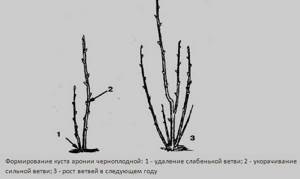
Picking berries
Regarding the collection, note all the excitement. After all, even ripe fruits stay on the branches for a long time and do not rush to the ground. Therefore, you can gradually engage in this process. The only problem is with birds, who, like people, love to feast on such treats.
If you have no plans to harvest, then you can easily leave the crop untreated for sixty days. But a window sill is not suitable for this. Either a refrigerator or a cool vestibule. There is another option - to dry it, then the shelf life increases significantly. But experienced housewives make compotes, jelly, marmalade and much more from this miracle product.
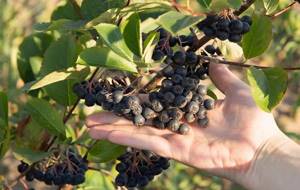
Possible diseases and ways to combat them
If we mention the diseases to which the bush is potentially susceptible, wood rot is among them. If this misfortune has already struck a representative of the flora, then Bordeaux mixture can help. She needs to spray her “pet.” Did not help?
You should not take risks and hope for salvation, because you are risking the rest of the crops in your garden. It is better to get rid of the affected specimen. To do this, they dig it up and also get rid of the soil surrounding the roots. Rot can also affect fruits. They turn into mush in this case.
It is easy to distinguish what exactly this disease has attacked by the peculiar whitish droplets. They are found on the skin of the berries and contain fungal spores. The same Bordeaux mixture or copper-based preparations will help overcome the disease. In this case, you need to immediately remove the affected berries. Diseased specimens that are not collected in time can infect their “neighbors.”
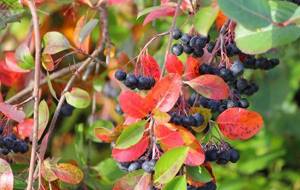
Oval brown spots on the leaf blades are a clear sign of septoria blight. Over time, these spots become holes. In case of damage, irrigation with copper oxychloride helps. The red mite can also cause damage that will be fatal to the crop.
His favorite treat is leaf juice. The insect sucks it out. This is where fungicides should come to the rescue. Moreover, with each treatment it is worth changing the drug. Otherwise, the bugs will develop immunity and you won’t be able to get rid of them.
The bush is not immune to attacks from aphids. She turns the plant into a mummy, sucking all the juices out of it. Moreover, it spreads a bunch of dangerous viruses. Therefore, insecticides should become your “friends” while fighting such an enemy.
Hawthorn poses no less danger. This butterfly will not allow fruit to set, because it destroys the buds. Prevention is the priority here. After all, one individual is mega-productive. This winged creature can produce half a thousand eggs.
Here you cannot do without preventive irrigation with fungicides. This same option can save you from the spread of rowan moths. Her goal is berries. She makes tunnels in them. The sawfly is dangerous for crops. But you can fight it in the same ways.

The marbled bug often spoils chokeberry crops in large quantities
Aronia chokeberry: harvest and its use
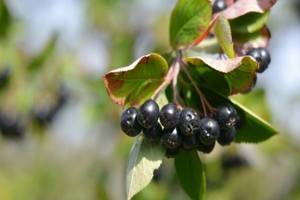
Harvesting almost always occurs in one process. If you send the berries for processing, you don’t need a shield; if you send them for your own use, you need a shield. Harvesting can take a long time due to the fact that the berries hang tightly on the branches. The only thing to consider is the birds. We all know their love for berries, so be on the lookout. A room with a temperature no higher than ten degrees is suitable for storing berries. The fruits can be stored for 2 months.
In cooking, Aronia berries are used to make marmalade, compotes, dried fruits, juices, jellies, wine, purees, preserves, liqueurs, jam and to extract natural food coloring.
Planting care
Caring for chokeberry shoots is simple - regularly weed, water, and loosen. Weeding must be done, otherwise the weeds will choke the weak trees, and they will have to be grown again. Weeding and loosening is required for three years, then the grass can be mowed, preventing the area under the tree from becoming overgrown.
In dry weather, it is recommended to water mature trees once a week - 2-3 buckets for each. Chokeberry watering is especially necessary at the beginning of the growing season and during the formation of fruits. For ease of watering, you can make furrows around the trunk, removing them by 30-40 cm. Mulching will help make care easier by slowing down the evaporation of moisture and the growth of weeds.
Reference! Loose soil freezes less, so it needs to be loosened in the fall - this will protect the roots from freezing.

Top dressing
No feeding is carried out for the first 3-4 years. After this period, in the spring you can pour organic matter under the bush, use ammonium nitrate (20 g per 1 m²), in the fall - potassium salt (20 g) and superphosphate (30 g) per 1 m², after flowering, treat with urea (20 g per 10 l).
Information! Nitrogen in excess amounts contributes to the formation of a large number of shoots, the bark of which does not have time to become woody before frost, and a bud does not form at the top, which can cause them to freeze in winter. It is not recommended to use nitrogen fertilizers after mid-July.
Trimming
Chokeberry shoots grow very quickly, which leads to strong thickening. They should be removed in the spring, leaving the strongest ones and growing upwards (5-6 pieces), and leave the annual ones - they will bear fruit. Pruning of shoots that have stopped growing, and those that grow inside the crown, non-fruit-bearing, damaged, dry, crooked branches is also performed.
Regular fruiting weakens the rowan and, for support, at 7-9 years of age, anti-aging pruning is carried out in any way:
- strong shoots (3-5) are left, the rest are removed;
- all branches are deleted.
The shoots will grow and begin to bear fruit after 1 year. In the fall, dry, diseased, broken, bare branches are pruned.
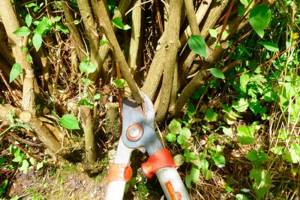
Medicinal properties
To list all the beneficial properties of chokeberry , the fingers of both hands are not enough. It’s worth starting with the fact that there are plenty of vitamins in this product. This is both group B, and group E, C. Vitamin P occupies a significant share in the composition. It is thanks to it that a diseased heart can be helped. There is a lot of glucose and fructose in the pulp.
It also contains pectins and tannins. It is the latter that can strengthen the walls of blood vessels. The berry is not deprived of microelements either. These include boron, fluorine, iron, iodine and much more. If we talk about the benefits of chokeberry for the intestines, then it is worth mentioning that it can normalize the functioning of this organ.
Cholesterol is another problem that can be combated by eating flavorful foods. If your liver is suffering, you should also take a closer look at this supplement to your diet. Not satisfied with the performance of your immune system? You don't have to run for pills. Try including these black fruits in your menu first.
And finally, not every product can boast of being able to rid you of heavy metals that the body has accumulated. High blood pressure is a reason to eat a handful of this treat every day. Official medicine admits that the berry lowers the numbers on the tonometer.


